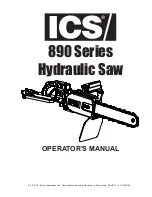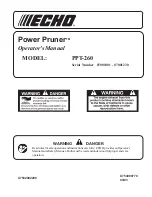
Cutting Capabilities
Operation
The cutter is designed for ferrous materials. Do not try to cut wood, masonry or magnesium.
9
Pipe
2.9”
2.9”
3.1”
2.3”
3.1”
2.3”
2.9”
2.9”
3.5” x 2.3”
3.5” x 3.1”
90°
45°
Square
Pipe
Rectngular
Pipe
Square
Bar
Round
Bar
• Double-check the disc is not making contact with the
work piece before turning on the tool.
• Let the disc reach its maximum speed before starting to
cut.
• Use the saw handle to lower the cutter head. Use a firm
and continuous movement. Use care not to bang or push
strongly the piecework with the disc. This prevents the disc
from going out of rotation causing a bad cut or breaking
the disc.
• Once the disc penetrates the work piece, continue
cutting with a light and constant movement to get a clean
and even cut.
• When finishing the cut raise the cutter head and wait for
the disc to stop completely before checking the work
piece.
Additional Advise
• Double check there are no screws,
rivets or any object incrusted in the section of the work
piece you are about to cut.
• Before making any cut take the
necessary time to determine the ideal way to fasten the
work piece.
• Use extra care when working piece
that are too small, too large or have an irregular shape.
• If working pieces larger than the work area use auxiliary
supports. Keep the cut piece free to move aside the disc
once the cut is finished.
• Do not allow other person to hold the
work piece in the event it is larger than the work area.
• Do not use this tool to cut pieces that are too small and
that cannot easily be fastened with the clamping screw.
• In the event the work piece gets stuck in the disc, release
the switch to turn off the tool, wait for all the mobile parts
to stop, disconnect the saw and only then remove the
stuck piece.
• If the motor stops suddenly while cutting, release the
trigger switch, disconnect the tool and separate the disc
from the work piece. Turn on the tool again and finish
cutting.
• Making cuts too fast or stopping and starting many time
in a short period of time may overload the motor, thus
blowing the fuses or disconnecting the automatic switches.
• Voltage in the cables should not be 10% up or below 120 V~
Otherwise fuses may blow or automatic switches may be
disconnected.
ENGLISH
CAUTION
CAUTION
CAUTION
CAUTION
WARNING




































